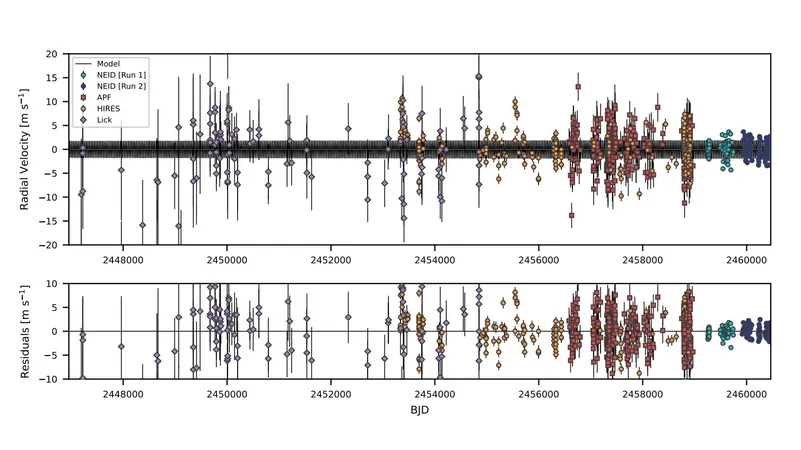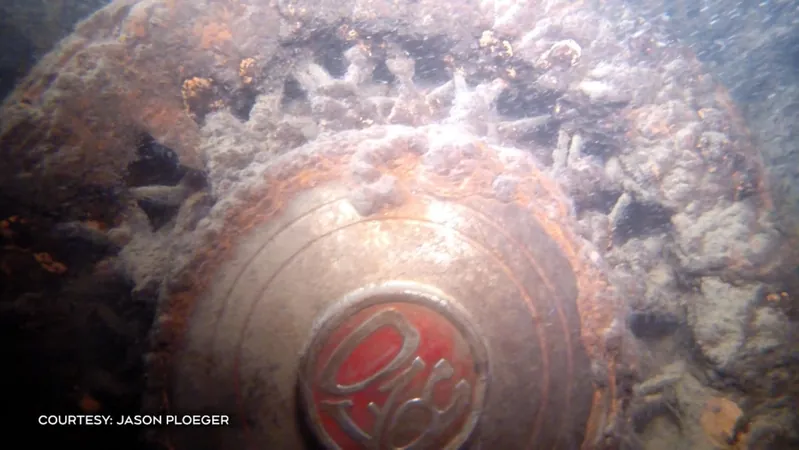
Breakthrough Discovery: Astronomers Unveil First Alien World in NEID Earth Twin Survey!
2024-09-26
Introduction
An exciting milestone has been achieved in the field of astronomy as an international team of researchers announces the discovery of a new extrasolar planet orbiting a star named HD 86728. This groundbreaking finding marks the first successful detection of an exoplanet under the NEID Earth Twin Survey (NETS) initiative, and details were published in a research paper on September 18 on the pre-print platform arXiv.
The NEID Instrument
The NEID instrument, a highly advanced fiber-fed optical-near-infrared echelle spectrograph, is installed on the 3.5-meter WIYN Telescope at Kitt Peak National Observatory in Arizona. The NETS survey leverages NEID's capabilities to focus on identifying low-mass exoplanets surrounding nearby bright stars.
Discovery Details
The discovery was spearheaded by Arvind F. Gupta and his team from the U.S. National Science Foundation National Optical-Infrared Astronomy Research Laboratory in Tucson, Arizona. The newly identified planet, dubbed HD 86728 b, is situated around 48.6 light-years from Earth, orbiting a bright G3Va-type star.
Research Findings
In their publication, the researchers shared that they compiled three years of observations from the NETS program, recording 137 separate nights of data for the HD 86728 system. The results confirmed the presence of HD 86728 b, which has a circular orbit completing a revolution every 31.15 days, at a distance of about 0.19 AU from its host star. This newfound exoplanet is estimated to have a mass roughly 9.16 times that of Earth.
Implications for Planetary Systems
Interestingly, the study reveals that most exoplanets with similar characteristics typically exist within multi-planet systems. If HD 86728 b is solitary, it would be a rare case among less than 12 percent of known planets without sibling companions. However, additional observations will be required to eliminate the possibility of other planets in the HD 86728 system.
Host Star Characteristics
In terms of its host, HD 86728 boasts a radius approximately 1.24 times greater than that of our Sun, with a mass comparable to that of our star. The star's effective temperature is about 5,610 K, which indicates a relatively warm stellar environment, and its metallicity is measured at 0.2 dex.
Conclusion
The research team emphasized the significance of precision instruments like NEID in unearthing low-mass alien worlds. Their conclusion highlights the continual role of extreme precision radial velocity spectrographs in advancing the search for Earth-like planets.
Future Prospects
"NEID and other ultra-sensitive spectrographs are pushing boundaries and will pave the way for finding exoplanets of smaller masses and longer orbital periods, driving us closer to discovering true Earth analogs," the scientists noted.
Significance of the Discovery
This remarkable discovery not only adds another world to the growing catalog of known exoplanets but also bolsters the prospects of finding planets similar to Earth that could potentially harbor life. The ongoing advancements in observational technology promise a thrilling future for planetary science and the quest to understand our universe's infinite possibilities! Stay tuned for more out-of-this-world updates!









 Brasil (PT)
Brasil (PT)
 Canada (EN)
Canada (EN)
 Chile (ES)
Chile (ES)
 España (ES)
España (ES)
 France (FR)
France (FR)
 Hong Kong (EN)
Hong Kong (EN)
 Italia (IT)
Italia (IT)
 日本 (JA)
日本 (JA)
 Magyarország (HU)
Magyarország (HU)
 Norge (NO)
Norge (NO)
 Polska (PL)
Polska (PL)
 Schweiz (DE)
Schweiz (DE)
 Singapore (EN)
Singapore (EN)
 Sverige (SV)
Sverige (SV)
 Suomi (FI)
Suomi (FI)
 Türkiye (TR)
Türkiye (TR)